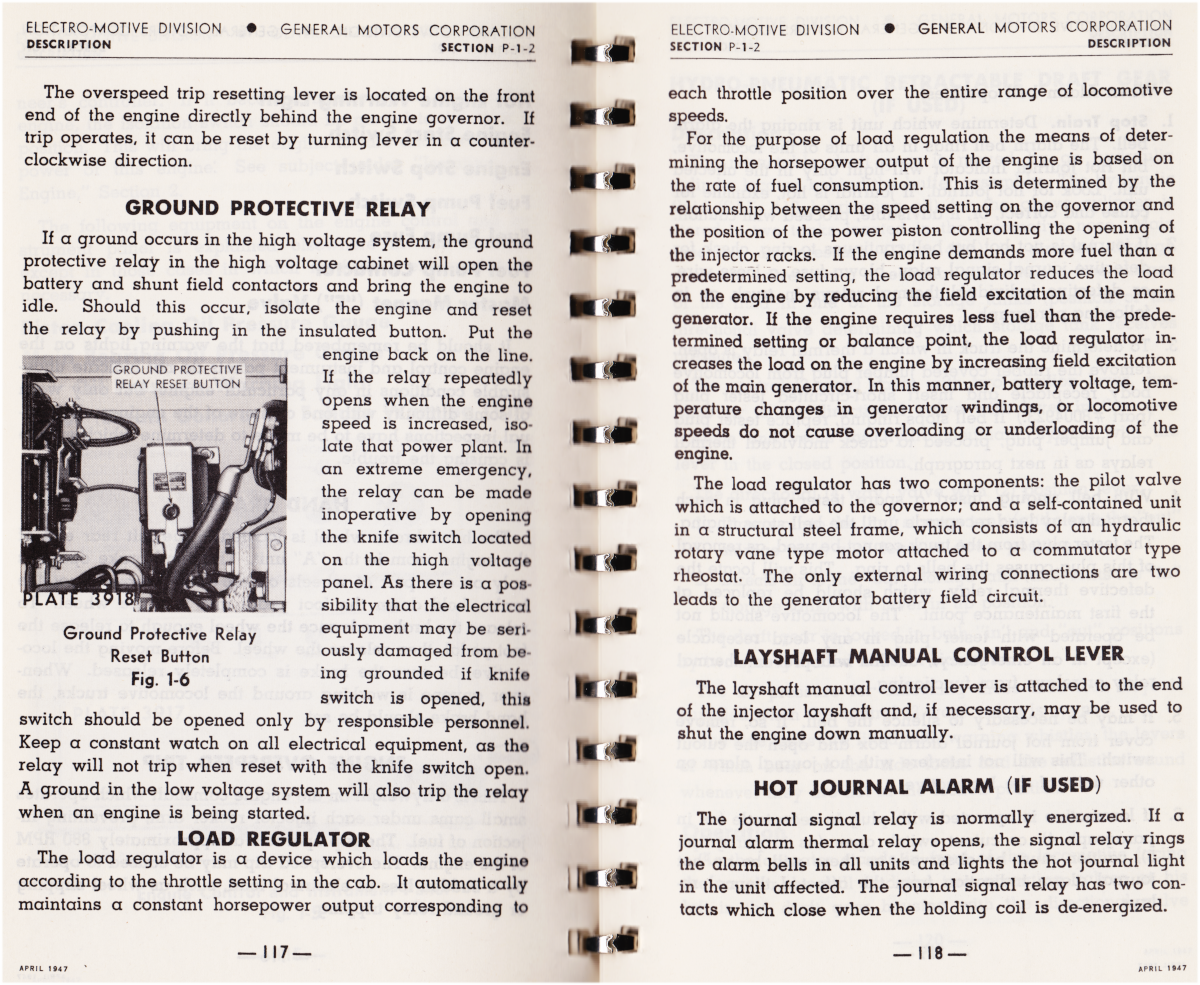'[In 1973] According to Bruce Chapman, the engineer had never been on one of these
units, and this thing had "manual backward transition, or some old
thing". Anyway, the main generator burned up on the first trip out of
Ogden!'
... This text is from the fifth paragraph of my brother's excellent article on E8 locomotives:
At the very end of this first section of the E7 Operating Manual ... I jump ahead to include the pages covering the transition procedures. You can then imagine what might have happened with the CPR E8 during a test run in freight service - immediately after rebuilding at Ogden.
* * *
Somehow an Operating Manual for an E7 locomotive made it to Schreiber, on the north shore of Lake Superior. Rolly Martin bought his house from another CPR engineer, and the latter left behind a number of older manuals and booklets.
Perhaps there was a remote possibility that one of CPR's E8 locomotives might run through and Engineer McCorkill wanted to be prepared, and perhaps the E7 manual was the only reference available at the time for the E8. Perhaps Engineer McCorkill was just interested in this revolutionary diesel technology.
In addition to the transition procedures, this manual also features instructions for operating the unit with steam helpers AND operation of the front Hydro-Pneumatic Retractable Draft Gear. The last enabled the pilot of the company's expensive new passenger train to look completely streamlined. However, on a cold winter day, crew members would probably have preferred to operate with the draft gear out and available.
As usual, images are repeated below their appearance on a given page.
I enlarge them and try to make them easier to read or resolve when I do this.
The following diagrams fold out from the manual and must be scanned in sections. They are displayed at the maximum size that the blogging software allows.
Note the reference to the 'Mars Headlight' switch.
Wikipedia has a 'Mars Light' entry if you haven't run across these before.
As a small child, I found the rotating beacons a fascinating thing to see on CPR's Budd cars.
At level crossings without automatic electric signals, non-railfan citizens of the 1950s and 1960s, by day, would often expect to see a smoke plume and hear a steam whistle as a train approached.
In Canada a lot of energy was put into creating an air horn chord for diesel locomotives which sounded like a steam whistle. The single tone of many early diesel locomotive whistles often sounded like a boat horn.
In Canada a lot of energy was put into creating an air horn chord for diesel locomotives which sounded like a steam whistle. The single tone of many early diesel locomotive whistles often sounded like a boat horn.
Steam locomotive headlights had usually not been lighted by day. Budd cars were essentially a very fast bus on rails which replaced steam locomotives - particularly on thinly-used branch lines and you'd expect that these routes would have a lot of 'unprotected' crossings. The CPR Mars light and the striped vehicle front and its replacement pattern (below) was an attempt to reduce the possibility of crossing accidents.
In the UK, on their early version of Budd cars, two horn tones were available through a toggle lever and engineers were trained to sound both tones to alert the public at level crossings and when approaching track forces. This was done as the horns could otherwise be confused with car horns.
Watch out for a very fast bus!
The tailend of Dayliner movement near our grandmother's place at Valois, Quebec in 1965.
This shows the Mars light on engineer's door, the distinctive 'nose art',
and the multi-element whistle.
This shows the Mars light on engineer's door, the distinctive 'nose art',
and the multi-element whistle.
I think all of the labels for the pull-down switches are (barely) legible and
they are listed in the text, above.
A Note About E7 Transition ...
These pages are a preview from the next section of the manual.
They are here 'early' to explain the antiquated technical quirk which caused
the misadventure of the CPR E8 in the 1973 post-rebuild event
described at the beginning of this post.
described at the beginning of this post.
Probably the bold text on Page 204 was what the
freight engineer didn't know about the E8 in his locomotive consist.
Link to ...






























